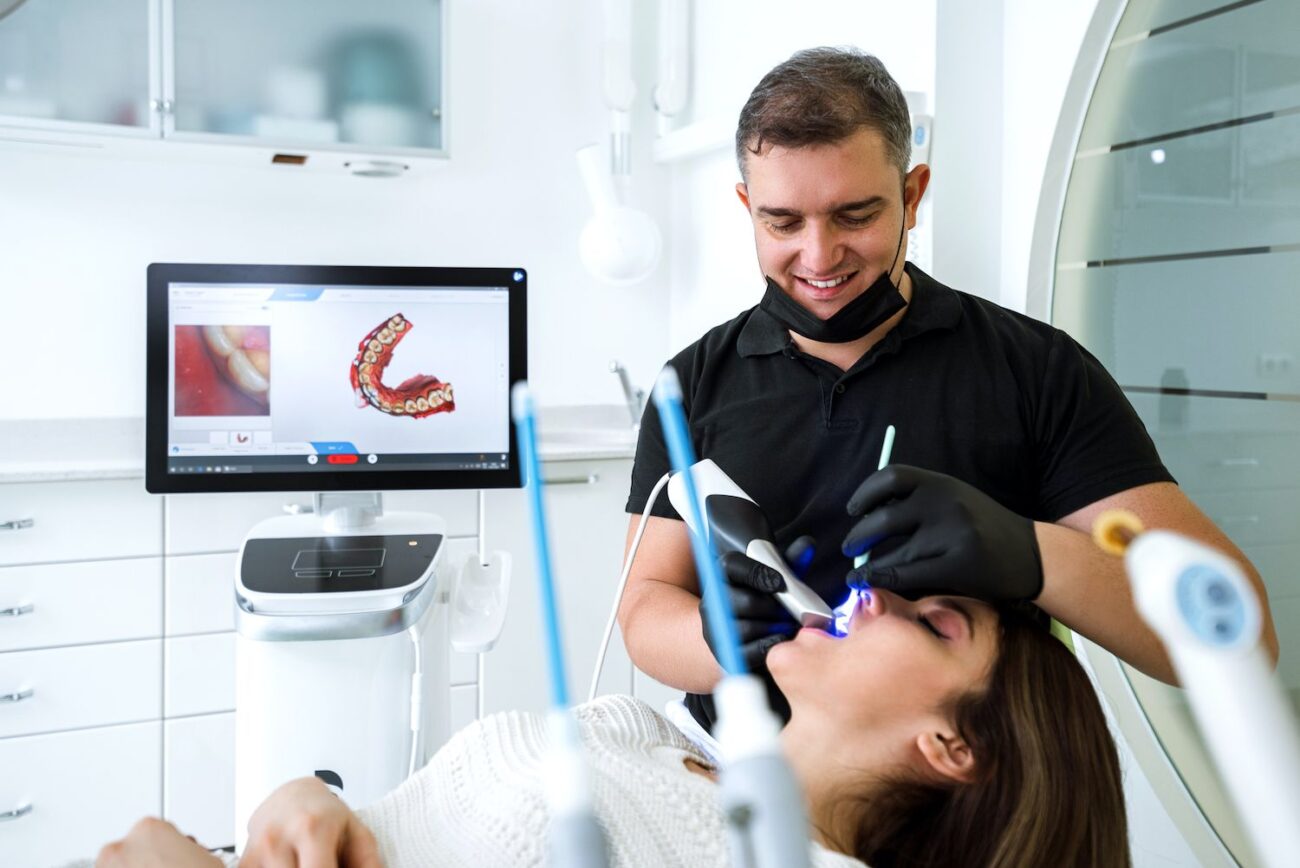At Crestwood Dental, we are dedicated to helping you achieve your dream smile. Our cosmetic tooth bonding services help enhance the look of your teeth while also preserving their natural beauty. Bonding is a simple yet effective procedure that can fix many different dental issues. Dr. Brad Gorsky is an experienced cosmetic dentist and can use tooth bonding to address a range of restorative and cosmetic concerns impacting your smile. He also provides additional restorative and cosmetic dentistry treatments to patients.


What is Cosmetic Bonding?
Cosmetic bonding is the process of applying a tooth-colored composite material to improve the appearance of a tooth. This versatile treatment can correct a range of issues, including chipped or cracked teeth, as well as uneven tooth color. Adding composite material to the tooth allows us to reshape and rebuild us. This results in a more even, harmonious smile.
This process improves the aesthetics of your smile while allowing the tooth to maintain a natural appearance. In order to bond a tooth, tooth-colored material is added to the tooth to build it up.
Advantages of Cosmetic Bonding
Cosmetic bonding offers several advantages over other treatments:
- Cost-Effectiveness: One of the main advantages of bonding is its affordability. Bonding can be a less expensive treatment than other cosmetic options. If you are looking for a budget-friendly option to improve your smile, bonding may be the ideal choice for you.
- Quick and Convenient: Unlike some dental procedures that require multiple appointments, we can often complete cosmetic bonding in a single visit. In fact, an appointment for bonding treatment usually takes less than one hour to complete. This makes it a convenient option for busy Tuckahoe patients seeking immediate results.
- Preserve Natural Tooth Structure: Unlike veneers or crowns, bonding allows us to preserve more of your tooth’s structure and enamel. This minimally invasive approach helps maintain the integrity of your teeth while still achieving stunning cosmetic results.
Is Cosmetic Bonding Right for You?
Cosmetic bonding may be the ideal solution if you are looking to:
- Correct the shape of a chipped tooth
- Correct the appearance of a cracked tooth
- Provide more even tooth color
However, it is essential to keep in mind that while bonding offers immediate results, it may not be as durable or long-lasting as other treatments. For example, porcelain veneers and dental crowns provide more stability and last longer than composite resin. Bonding material can also stain from coffee, tea, tobacco or some foods. Therefore, proper home care and regular dental check-ups are essential for the longevity and look of your bonded teeth.
Frequently Asked Questions
How soon after bonding can I eat or drink?
You can usually eat or drink right after the bonding procedure, especially if no anesthesia is used. However, it’s a good idea to wait at least an hour to let the material fully set and avoid accidentally damaging the bonded area. If your dentist used anesthesia, wait until the numbness wears off to avoid biting your lip or cheek. Follow any specific guidelines your dentist provides.
What should I avoid eating or drinking after bonding?
We suggest you avoid hard foods like nuts, ice, and hard candy that can chip the bonding material. Stay away from highly staining substances like coffee and red wine for the first 48 hours while the bonding fully sets. Don’t bite your nails or chew on pens, as bonding material is more fragile than natural tooth enamel. These precautions help ensure your bonding lasts as long as possible.
Does the bonding procedure require anesthesia?
Most bonding procedures don’t require anesthesia unless the treated area involves decay or is near a sensitive part of the tooth. Cosmetic bonding typically doesn’t include pain and is minimally invasive. If discomfort is expected, your dentist may use a local anesthetic to keep you comfortable.
Can bonded teeth be whitened like natural teeth?
Bonded teeth doesn’t respond to whitening treatments like natural enamel. If you plan to whiten your smile, it’s best to do so before getting bonding done. We can then match the bonding material to the newly whitened shade of your teeth.
Is cosmetic bonding suitable for front teeth?
Yes, bonding is commonly used on front teeth to fix chips, cracks, small gaps, or discoloration. It blends in well when properly shaped and polished. It’s an affordable and conservative option for improving front-tooth appearance without major alterations.
Does bonding stain more easily than natural teeth?
Yes, the resin used in bonding is more porous than natural enamel and can stain more easily. Coffee, wine, and smoking are common culprits. Maintaining regular cleanings and avoiding staining foods and drinks will help keep bonded teeth looking bright.
How can I prolong the life of my bonded teeth?
Brush and floss daily, avoid biting hard objects and limit the consumption of stain-causing foods and drinks. Regular dental checkups help monitor the bonding for wear or discoloration. If you grind your teeth, ask about a night guard to protect the bonded surfaces while you sleep.
Crestwood Dental is here for Tuckahoe, Yonkers, Eastchester, New Rochelle, and all nearby neighborhoods in Westchester County.
